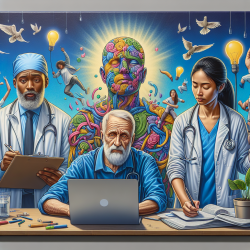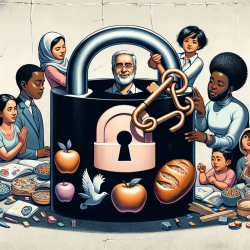Introduction
The COVID-19 pandemic reshaped the educational landscape, compelling educators to adapt swiftly to new teaching modalities. A recent study titled "The shifting educational landscape: science teachers’ practice during the COVID-19 pandemic through an activity theory lens" provides valuable insights into how teachers navigated these changes. By leveraging Cultural-Historical Activity Theory (CHAT), the study explores the pedagogical shifts that occurred during this time and how these shifts could be sustained post-pandemic. This blog will delve into the findings and offer practical strategies for practitioners to enhance their skills and create better outcomes for students.
Understanding the Shifts in Educational Practices
The study followed ten science teachers from two Canadian high schools as they adapted to the challenges of online learning. Teachers were part of a professional learning community (PLC) that focused on developing inquiry-based learning (IBL) strategies. The pandemic necessitated a shift in focus to explore effective IBL teaching strategies in a virtual environment. The research highlights several key areas where teachers experienced tensions and contradictions, including student engagement, evaluation, and the development of new teaching practices.
Key Findings and Practical Applications
1. Enhancing Student Engagement
One of the primary challenges identified was maintaining student engagement in a virtual setting. Teachers found that traditional hands-on activities did not translate well to online platforms. However, they developed innovative strategies to engage students, such as:
- Incorporating active learning opportunities through online platforms.
- Utilizing digital tools like Google Jamboard and Slides for collaborative projects.
- Encouraging peer evaluation and feedback to foster a culture of sharing.
Practitioners can enhance student engagement by integrating these strategies into their online teaching practices, ensuring that learning remains interactive and student-centered.
2. Rethinking Evaluation Practices
The pandemic prompted a reevaluation of traditional assessment methods. With the cancellation of high-stakes exams, teachers explored alternative forms of evaluation that focused on authentic problem-solving and critical thinking. This shift allowed for more meaningful assessments that better reflected students' understanding and competencies.
Educators are encouraged to continue exploring diverse assessment strategies that prioritize student learning over rote memorization. This approach not only aligns with modern educational goals but also prepares students for real-world challenges.
3. Leveraging Professional Learning Communities
The study underscores the importance of professional learning communities in supporting teachers' professional growth. Through collaboration and shared experiences, teachers were able to navigate the complexities of online teaching and develop new pedagogical practices.
Practitioners should actively participate in or establish PLCs to foster a supportive environment for continuous learning and innovation. These communities provide a platform for sharing resources, discussing challenges, and collectively finding solutions.
Conclusion
The findings from this study highlight the resilience and adaptability of educators in the face of unprecedented challenges. By embracing change and leveraging new teaching strategies, teachers can create more engaging and effective learning environments for their students. As we move forward, it is crucial to sustain these innovations and continue exploring new ways to enhance educational practices.
To read the original research paper, please follow this link: The shifting educational landscape: science teachers’ practice during the COVID-19 pandemic through an activity theory lens.










